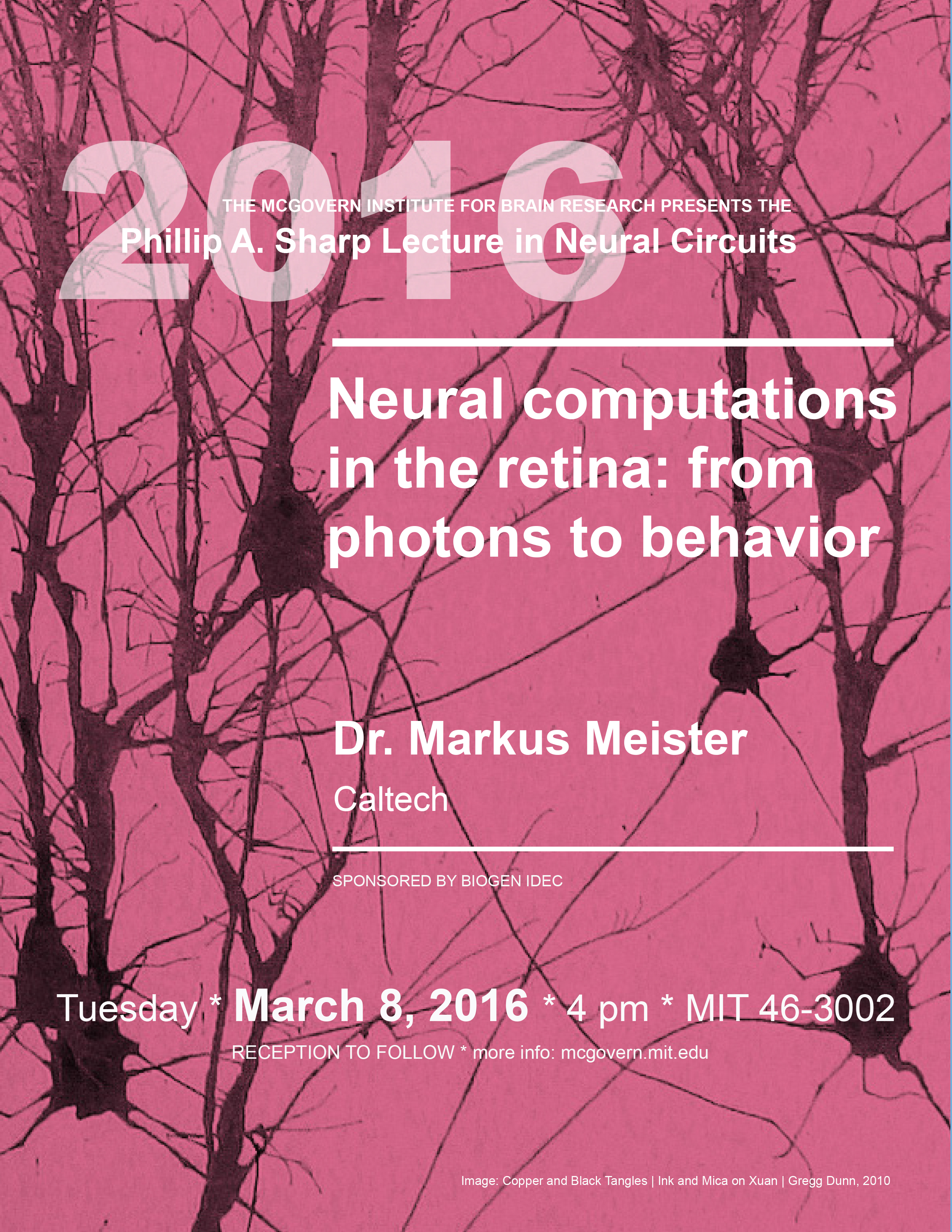2016 Phillip A. Sharp Lecture in Neural Circuits
Caltech's Markus Meister to deliver Sharp Lecture on March 8, 2016

Title: “Neural computations in the retina: from photons to behavior”
Speaker: Markus Meister, Caltech
Date + Time: March 8, 2016 @ 4pm
Location: 46-3002 (Singleton Auditorium)
Abstract:
The retina is touted as the brain’s window upon the world, but unlike a glass pane, the retina performs a great deal of visual processing. Its intricate circuits use ~70 different types of neuron. The output signals in the optic nerve are carried by 20 different types of retinal ganglion cell, each of which completely tiles the visual field. Thus the eye communicates twenty parallel representations of the visual scene. This raises several questions: What is being computed here, can we understand the visual feature reported by each type of ganglion cell? How is this feature computed by the circuit of neurons and synapses that leads to that ganglion cell type? And finally, why are these particular features getting computed, rather than some other set? In recent years, all these research areas have been turbocharged by modern genetic tools, especially the ability to visualize and modify select neuron types within a circuit. Some general insights are:
What? The various ganglion cell types fit on a spectrum from simple “pixel encoders” to “feature detectors”. A few types encode a very simple function of the image, like the local contrast, with a continuously varying firing rate. However, most types fire quite rarely and report specific features, for example differential motion between the foreground and the background. Some ganglion cells seem to play an alarm function; they are silent except under very specific stimulus conditions associated with threats.
How? It has emerged that dramatically different computations can result from circuits using the same kinds of neuronal elements, but arranged in a different sequence or combinations. In fact many of the twenty circuits in the retina share the same elements. On at least one occasion the same neuron is used to transfer signals in both directions! An important source of nonlinearity on which the computations are based is the sharp thresholding of signals at the bipolar cell synapse, which has emerged as a very versatile circuit element.
Why? It has been proposed that each of the twenty ganglion cell types of the retina is Evolution’s answer to a specific behavioral need that is served by the visual system. If so, then the selective silencing of one type of ganglion cell should affect only selected visual behaviors. Early experiments suggest this is a promising avenue of research.




